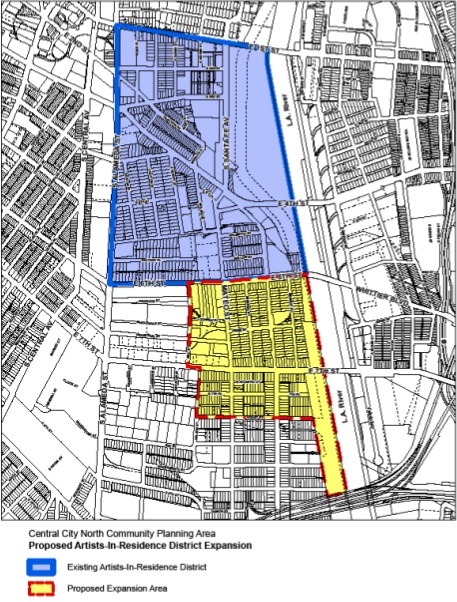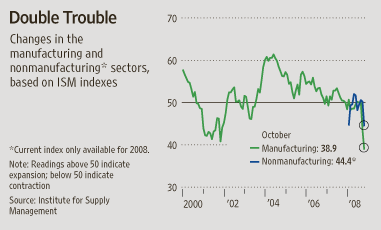The ISM’s non-manufacturing report is made up mostly of services and as such, describes the bulk of total U.S. economic output. Both lines on the chart spell more trouble going forward.
A Downturn For CBRE
A plummeting stock price and staff layoffs – CB Richard Ellis is tight on cash due to reduced business income. In the last year its shares have plummeted 75% in value to $5. The company said it had cut $190 million in fixed costs this year, in part through eliminating about 1,100 budgeting positions. CBRE also reduced it marketing and travel expenses.
They are not alone. Jones Lang LaSalle Inc’s stock is off 66% from last year. Grubb & Ellis shares have fallen about 80% in value. Cushman & Wakefield may not be publicly traded, but their owner is not American, rather an Italian company. A commercial real estate buyer, seller, tenant or landlord may want to consider an American owned firm that is not strapped by the above mentioned forces.
CMBS – Commercial Real Estate Mortgage Backed Securities
The market for commercial mortgage-backed securities (CMBS) already is in the midst of repricing assets and setting new standards for future loan originations. CMBS will come back as a significant lender for commercial real estate, but with new guidelines.
In the future, CMBS conduits are likely to make smaller loans than they did before and the debt will not be sliced up and repackaged in as many securitized bonds as the industry had seen during the past few years. There will need to be more due diligence requirements for originators that are similar to what they have in the stock market. Perhaps the originators will have to keep some interest in the loans they sell so they keep a stake in how it performs.
Availability of debt is a crucial factor in determining real estate pricing and capitalization rates. With all else being equal, higher debt availability at lower rates implies increased investment activity, which in turn bids up prices of real estate assets and exerts downward pressure on capitalization. Conversely, lower debt availability means lower asset prices and higher capitalization rates. Additionally, less transaction volume and rising vacancies will contribute to reduced pricing of commercial real estate properties.
SIOR Commercial Real Estate Index

The West Region, weighing in with an Index score of 68.4 points, experienced the greatest decline in positive attitudes regarding the state of the office and industrial markets citing the housing downturn as a factor. Respondents from that region are reporting higher vacancy rates, deeper concessions for tenants, meager development activity, and a high rate of pessimism for their three month outlook. However, this index paints too broad of strokes to accurately assess the condition of the Central Los Angeles Industrial real estate market which generally exceeds the broader commercial market in the West.
The SIOR Commercial Real Estate Index is constructed as a “diffusion index,” a very common and familiar indexing technique for economic measures. Other examples of diffusion indexes include the Index of Leading Economic Indicators, the Consumer Confidence Index, and the Institute of Supply Management’s Purchasing Managers’ Index. In the SIOR Commercial Real Estate Index, a value of 100 represents a well-balanced market for industrial and office property. Values significantly lower than 100 indicate weak market conditions; values significantly higher than 100 measure strong market conditions. The theoretical limits of this Index are a low of zero, and a high of 200, though it is unlikely that such limits would be approached as long as the property markets are operating efficiently.
The Index is based on a survey questionnaire with ten topics. The topics covered are (1) recent leasing activity; (2) trends in asking rents; (3) trends in vacancy rates; (4) subleasing conditions; (5) levels of concession packages in leases; (6) development activity; (7) site acquisition activity; (8) investment pricing levels; (9) the impact of the local economy on the property market; and, (10) the effect of the national economy on the property market. Survey respondents are given five choices. For each topic, five choices are provided, corresponding to conditions that are very weak, moderately weak, well-balanced, moderately strong, or very strong.
Possible Expansion of the Artist Live/Work Area

Only obsolete industrial buildings should be allowed to be converted.

